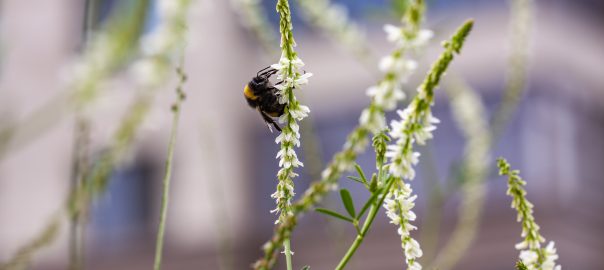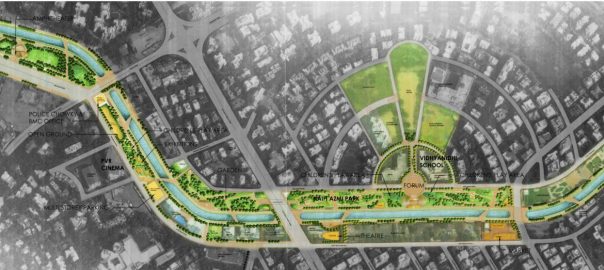Cities have been recognized as key drivers toward the successful governance of resources and as the front line in combating climate change. But there is a huge urban-rural inequality in carbon emissions in the making, particularly in rapidly urbanizing developing countries. Thus, the political and economic divide between the Global North and South that historically has shaped debates on climate change could soon be overshadowed by inequalities related to a potentially stronger disparity between rural and urban areas regarding carbon emissions.
Analyzing data from more than 200 countries over five decades shows some astounding results. Although carbon emissions are heavily correlated to its wealth (in terms of gross domestic product per capita), the data analyses suggest that a country’s level of urbanization correlates more with carbon emissions than its wealth. As countries urbanize, their cities’ contributions of carbon emissions and greenhouse gases start to become disproportionately high in comparison to their population and wealth.

The rural-urban divide is likely to precipitate into a more local yet complex governance to mediate carbon disparities between urban and rural areas. This will be particularly relevant to the developing world, which faces the triple challenge of rapid urbanization, social justice and environmental sustainability. As global emissions disparities move from North-South to rural-urban, there is a greater need to address these local and sub-national inequalities at a national level. Cities in urbanized middle-income countries emit comparable levels of carbon dioxide per capita to those in richer countries, while some rural areas in these low and middle-income countries have low or even negative carbon emissions per capita.
Historically, urbanization has been correlated with wealth creation and the massive consumption of fossil fuels that accompanied it. Some accounts indicate that more than 70 percent of global greenhouse gases are produced within urban areas, which consume 60 to 80 percent of the world’s energy. As the world makes an unprecedented rural-to-urban population shift, the 21st century poses a challenge in further addressing inequalities in access to resources and allocation of carbon emissions.
International climate governance recognizes the divide between “have” and “have not” countries in terms of carbon emissions. The Paris Agreement 2015 has shifted the onus of mitigating emissions back on voluntary contributions (through the Intended Nationally Determined Contributions) of respective nations. But focusing on inequalities in terms of carbon emissions from a rural-urban perspective further differentiates the have-nots and establishes that “rural” developing countries are the most disadvantaged. Thus, a country’s degree of urbanization, and not merely its economy, also determines its carbon emissions.
The rural constituencies in Africa are the most disadvantaged, with electrification rates reaching only 28 percent of the population. Electrification rates are the lowest in sub-Saharan Africa, at 19 percent. This has implications for designing a fair global regime for ending energy poverty and tackling climate change due to ethical, empirical and governance gaps related to urban-rural carbon dynamics.
Meanwhile, population growth for the remainder of this century is predicted to occur primarily in cities in low- and middle-income nations. Asia alone saw a surge of 1 billion urban dwellers from 1980 to 2010—more than the population of Western Europe and the United States combined—and the region is expected to add another billion by 2040. Thus, a radical and urgent transformation in the way we build our cities is needed to avoid disproportional increases in carbon emissions and disparities between rural and urban resource access and carbon emissions.
But there are new answers, and new momentum, around how to structure this transformation being discussed at the international level. The Sustainable Development Goals (SDGs) as well as the global urbanization strategy adopted late last year, known as the New Urban Agenda, offer opportunities to provide solutions leading to sustainable cities by making leaders accountable for the ecological impacts of their cities.
For example, the New Urban Agenda recognizes the unsustainable patterns of consumption and production in cities with impacts beyond urban areas. See for instance the agenda’s Paragraph 63: “Given cities’ demographic trends and their central role in the global economy, in the mitigation and adaptation efforts related to climate change, and in the use of resources and ecosystems,” it states in part, “the way they are planned, financed, developed, built, governed and managed has a direct impact on sustainability and resilience well beyond urban boundaries.”
It is clear that equal access to resources forms the bedrock of sustainable human settlements and future urbanization. However, this translates into immense barriers to changing national urbanization pathways, particularly for developing countries, which seem to be following the unsustainable examples of urbanization in rich countries. For example, some cities in China now emit more carbon dioxide per capita than many cities in developed countries.
Promoting cities solely as engines of economic growth creates stiffer competition among cities, which leads to more consumption, higher concentration of wealth and carbon emissions in urban areas. In turn, these dynamics increase inequities, particularly affecting the poorest and weakest in rural areas—those who have little voice and suffer from having fewer resources and opportunities. In order to decrease emissions and urban-rural inequalities, there is an urgent need to catalyze and scale up innovations that provide adequate housing, energy access, transportation and economic opportunities for the growing urban population in a sustainable manner.
The SDGs, New Urban Agenda and Paris Agreement on climate change together offer a chance to show the importance of sustainable urbanization in fighting inequalities within and beyond cities. Still, although changes made toward more-sustainable urbanization patterns would yield immense climate co-benefits to both urban and rural areas, the implementation of international agendas is far from catalyzing the necessary changes on the ground. For that, we need to strengthen institutions and capabilities at the local and sub-national levels so they can lead the urban transformation—one that positively impacts on cities and beyond, reducing the growing urban-rural divide in the highly urbanizing developing countries.
Jose Puppim
Johor Bahru – Cambridge – Rio
Mahendra Sethi
New Delhi
This article is based on a paper that was part of the United Nations University’s Habitat III series featuring research and commentary related to the U.N. Conference on Housing and Sustainable Urban Development that took place in October 2016 in Quito, Ecuador. To read more on this topic, see the following publications:
Sethi, M. and Puppim de Oliveira, Jose A. (2015). From global ‘North-South’ to local ‘Urban-Rural’: A shifting paradigm in climate governance? Urban Climate, 14 (4) 529–543. https://doi.org/10.1016/j.uclim.2015.09.009
Doll, C.N.H and Puppim de Oliveira, Jose A. (Eds.) (2017). Urbanization and Climate Co-Benefits: Implementation of Win-Win Interventions in Cities. Routledge. https://www.routledge.com/Urbanization-and-Climate-Co-Benefits-Implementation-of-win-win-interventions/Doll-Puppim-de-Oliveira/p/book/9781138953444
Sethi, M. (2017). Climate Change and Urban Settlements – A Spatial Perspective of Carbon Footprint and Beyond. Routledge. https://www.routledge.com/Climate-Change-and-Urban-Settlements-A-Spatial-Perspective-of-Carbon-Footprint/Sethi/p/book/9781138226005
about the writer
Mahendra Sethi
Mahendra Sethi is an urban environment expert and editor at the National Institute of Urban Affairs, India.












If Justin Trudeau wants the carbon tax to work in Canada, he needs to create a Canadian model of taxation that proportionally taxes areas of highest emissions more heavily. Large Urban centres generate the most carbon emissions on the planet and yet have the least amount of vegetation to uptake those emissions and create oxygen. Carbon tax needs to proportionately tax emissions based on land area (not population) and provide offsetting tax rebate incentives based on oxygen producing vegetation, CO2 consuming areas, thus targeting areas that produce the most emissions, not the most per capita. Large populated countries like China and India produce the most emissions causing the most destruction, yet argue per capita they are not as bad as Canada. Well Canada is not causing the most catastrophic climate change world wide and in the end that is all the environment cares about. Unite Canada on the climate change and allow the rural citizens of Canada to feel they matter too. Unite Canada, unite the world.
Why must we have urbanization? It seems tautological to me. And the benefits are often negative to the health of the planet, and based around excessive consumption. I think we need to rethink this whole thing and learn to appreciate the small scale instead.